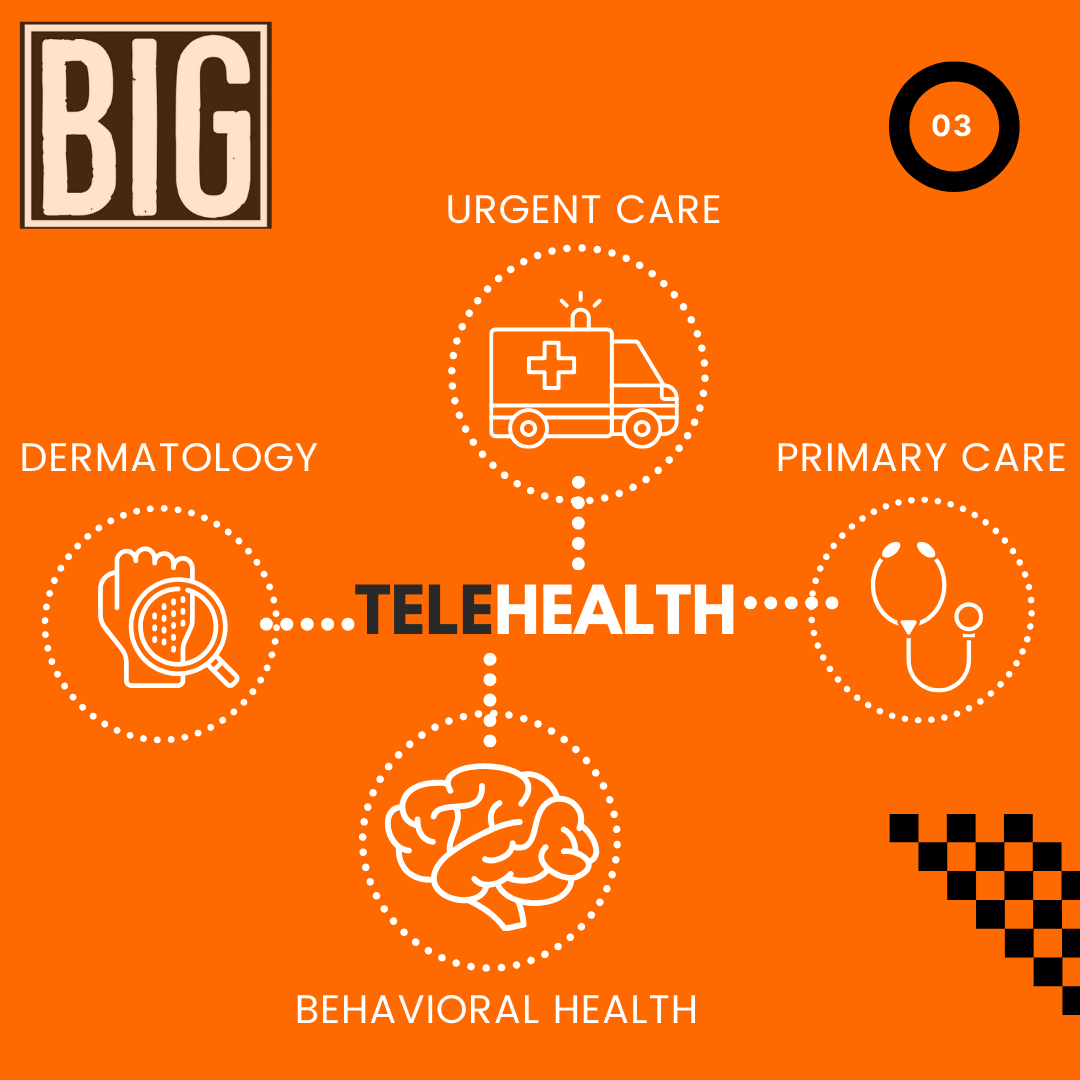Deeper insight into the insurance
industry.
Follow for more

The Future of Primary Care - Telehealthlth
“Fortune favors the bold?”
- Virgil
Introduction:
In today's fast-paced world, the landscape of healthcare is rapidly evolving, with technology playing a pivotal role in reshaping how patients access medical services. One such technological advancement that has gained significant traction in recent years is virtual telehealth. The benefits, utility, considerations, and future trends of virtual telehealth, aren't going away anytime soon and will continue to expand. I hope to provide readers with valuable insights into this transformative aspect of modern healthcare.
🌐 Telemedicine: The Future of Primary Care
1. Evolution and Adoption
The concept of telehealth is not new, but its adoption has accelerated in recent years due to advancements in technology and changes in healthcare delivery models. According to the American Telemedicine Association (ATA), telehealth usage has surged dramatically, with the number of telehealth visits increasing by over 50% in recent years. This growth can be attributed to factors such as increased internet connectivity, expanded telehealth reimbursement policies, and the growing demand for convenient healthcare services. Some plans are now putting a large focus on $0 virtual-primary visits in many cases.
2. Accessibility and Convenience
One of the most significant benefits of virtual telehealth is its ability to improve access to healthcare services, particularly for individuals living in remote or underserved areas. By eliminating geographical barriers, telehealth enables patients to connect with healthcare providers from the comfort of their homes, reducing the need for travel and mitigating logistical challenges. This increased accessibility and convenience make it easier for patients to seek timely medical care, resulting in better health outcomes.
3. Cost Savings
In addition to improving access to care, virtual telehealth can also lead to cost savings for both patients and healthcare providers. By avoiding unnecessary travel and reducing administrative overhead, telehealth visits are often more affordable than traditional in-person appointments. Furthermore, telehealth can help reduce healthcare spending by preventing unnecessary emergency room visits and hospitalizations, particularly for patients with chronic conditions.
4. Enhanced Patient Engagement
Virtual telehealth empowers patients to take an active role in their healthcare by providing them with convenient access to medical services and resources. Through telehealth platforms, patients can not only schedule appointments, access medical records, and communicate with healthcare providers in real-time, enhancing their engagement and involvement in their care. This increased patient engagement has been shown to improve treatment adherence, health outcomes, and overall satisfaction with healthcare services.
5. Considerations and Challenges
Regulatory Landscape
Despite the growing adoption of telehealth, there are still regulatory challenges and barriers that need to be addressed. Telehealth regulations vary by state and country, affecting licensure, reimbursement, and practice standards for healthcare providers.
Technology Infrastructure
Effective telehealth delivery relies on robust technology infrastructure, including secure communication networks, electronic health records (EHR) systems, and telehealth platforms. Ensuring seamless connectivity and data protection is essential for delivering high-quality telehealth services and maintaining patient trust.
Privacy and Security
Protecting patient privacy and data security is paramount in telehealth, given the sensitive nature of medical information transmitted electronically. Telehealth platforms must adhere to stringent privacy and security standards, such as Health Insurance Portability and Accountability Act (HIPAA) regulations, to safeguard patient confidentiality and prevent unauthorized access or disclosure of protected health information (PHI).
6. Conclusion
Overall, virtual telehealth represents a transformative and indispensable aspect of modern healthcare, offering numerous benefits and utilities for patients, healthcare providers, and healthcare systems. From improved access to care and cost savings to enhanced patient engagement and chronic disease management, telehealth has the potential to revolutionize the way healthcare is delivered and experienced. As telehealth continues to evolve and expand, it is essential for healthcare organizations, policymakers, and stakeholders to collaborate and innovate to realize its full potential in improving health outcomes while enhancing patient experiences.
Note: The information and suggestions provided in this blog post are for informational purposes only and should not be considered as professional advice UNTIL you have spoken with a licensed agent FIRST. Please consult with one of our, or any trusted, licensed insurance professional or broker to discuss your individual circumstances and insurance needs to best understand what you qualify for and limitations in your plan.
FREE Primary and Urgent Care Visits?
Videos
Shorts
bite-sized content
Speak to a Live Agent
Stay up-to-date with all the plans and discounts available in your area

Connectivity
Modern Communications

Integrity
Honesty and Transparency.

Excellence
Top-Notch Services.

Connectivity
Modern Communications

Integrity
Honesty and Transparency.

Excellence
Top-Notch Services.

FOLLOW US
COMPANY
CUSTOMER CARE
LEGAL
Copyright 2025. Baughman Insurance Group. DBA: BIG Benefits. All Rights Reserved.




